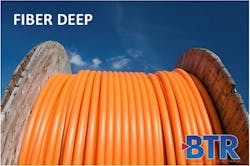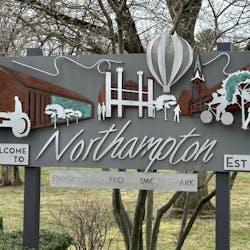Market analysts predict a heightened investment in fiber infrastructure to meet the need for greater internet speed and capacity. These investments, experts say, will dramatically stimulate economic productivity in the United States.
Cable is at the forefront of this investment, as over the years cable operators have pushed fiber deeper into their networks to better support broadband connectivity to subscribers. Techniques such as node splitting and node segmentation, as well as the capabilities provided by the coax medium, have enabled the industry to cover an estimated 85% of U.S. homes with internet speeds of 25 Mbps. The broad-scale penetration of their distribution fiber network has provided cable operators with an opportunity to expand their portfolios into adjacent services such as the backhaul of macro cell sites for wireless operators and enterprise services.
We have seen with the Cable Wi-Fi Alliance, some cable operators are providing internet connectivity through Wi-Fi hotspots deployed throughout their and other participating partner networks. Today, we see the same cable operators expanding their service offerings through agreements with major wireless providers as a virtual mobile network operator. These agreements have provided cable operators the opportunity to expand service offerings into the wireless space with a cellular and Wi-Fi experience outside of the home.
The continuous expansion of fiber deeper into the network has historically been the norm for the cable industry. However, we have seen a pivot point with demand for ubiquitous bandwidth pushing fiber much deeper and with more complex architectures than a traditional node split or segmentation. Here are some examples of fiber-deep expansion challenges the cable industry faces with the next "upgrade," and how to address them:
- As cable providers push fiber deeper into the access network with new architectures, the number of fiber termination points in the network may expand 10-12X. In some cases, node sizes can be reduced to as few as 64 passings. A "short payback period" is critical to the financial and competitive success of an expanded fiber-deep network. Operators will need to evaluate new deployment techniques to speed deployment.
- As providers push fiber closer to subscribers, they will expand further into the civil infrastructure, requiring municipal permitting that could impede the pace of a project. For instance, a jurisdiction may object to the size and placement of a street-side vault. One remedy is to make smart use of existing vaults or pathways: Consider smaller closure technology that eliminates splicing beyond the vault itself.
- Expansion of fiber deployments in the network will be most effective if, while designing, you consider adjacent services connected to the network. A multi-service network design is critical for operators to deploy as network upgrades move forward. Competitive pressures many times require a rapid deployment of FTTH-based services to single-family units, multiple dwelling units or a master planned community. Wireless densification and related small cell backhaul will rely on comprehensive and dense fiber networks that are different in some cases from current node + 0 architectures plans.
Smart infrastructure design and deployment will enable the cable network of the future while also considering cost constrictions. Focus in this phase can enable providers to cut the overall installation costs by as much as double digits, in our estimation.
New monetization mechanisms are needed to encourage fiber investment. As operators expand, there are ways to address the challenges of growth wisely, with an eye on the bottom line. Fiber deployment in access networks is justified today, especially if a short payback period can be guaranteed, a new footprint is being built, repairs from rebuilding after a storm or other event justifies replacement or in subsidized geographies where Universal Service Funds can be used.
A deep-fiber architecture will be worth the spend: Companies that don't increase their fiber footprint could miss out on profits from traffic growth while running the risk of governmental criticism for widening the digital divide. A robust future network is worth investing in today.
Kevin Bourg is optical network architect at Corning Optical Communications.





